
Roots
To journey into the ancestral meaning behind covering textured hair at night is to step onto hallowed ground, a place where the physical care of a strand intertwines with the deep wellspring of heritage. For those with hair that coils, crimps, and springs, hair is more than a biological appendage; it is a living archive, a crown holding centuries of stories, resilience, and wisdom. This inquiry into nocturnal hair coverings reaches beyond mere practicalities of frizz and moisture retention; it beckons us to remember, to witness, and to acknowledge a legacy passed down through generations. How our forebears safeguarded their crowns at dusk speaks to a profound respect for self, community, and the spiritual realms that cradled their existence.
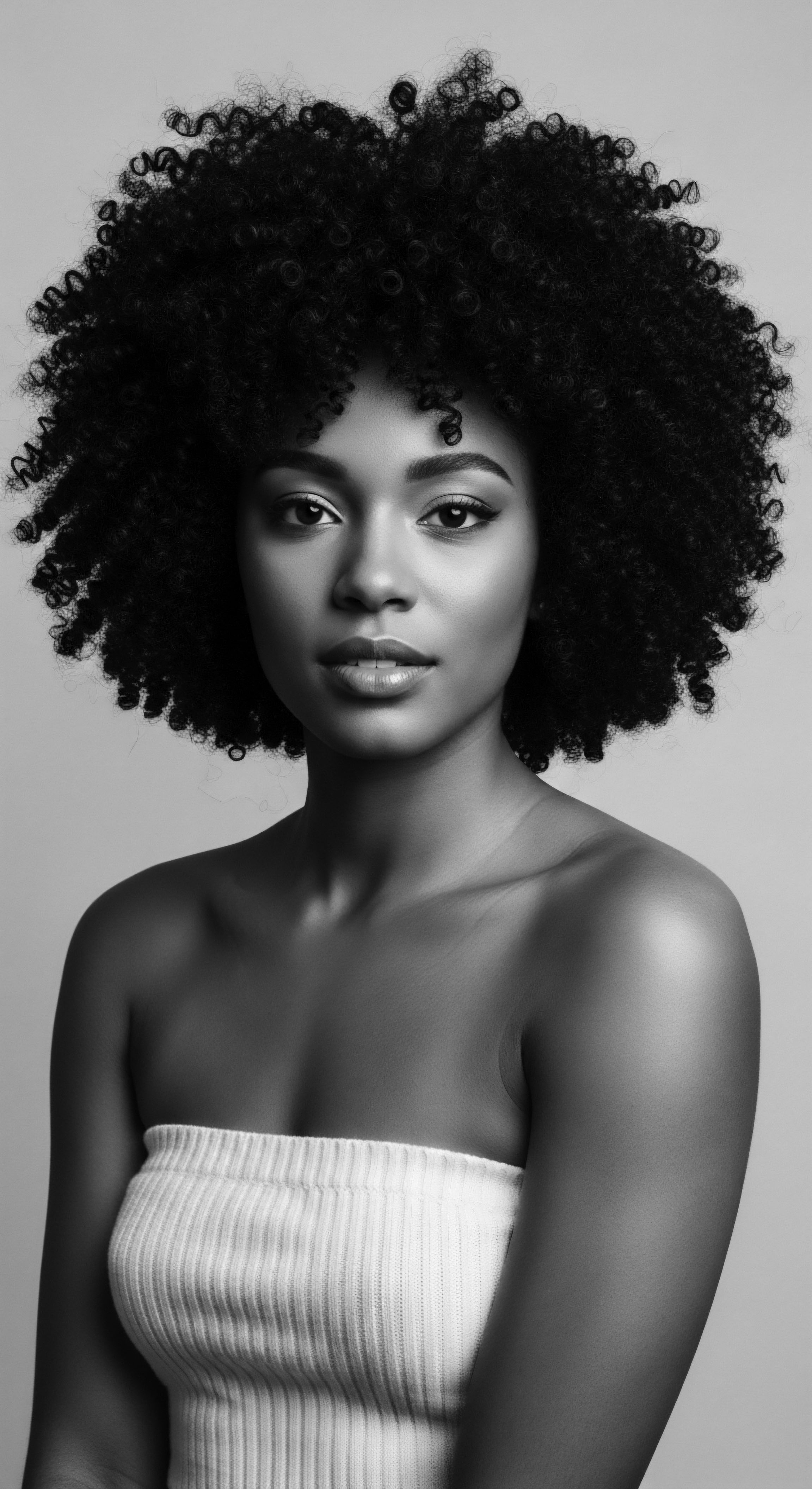
What Is Textured Hair’s Ancestral Structure?
The unique architecture of textured hair, often characterized by its elliptical cross-section and twisted helical shape, confers both remarkable strength and a particular vulnerability to desiccation and friction. Unlike hair with a more circular cross-section that allows for a smoother cuticle, coiled strands expose more of their delicate outer layer, making them prone to losing moisture and sustaining damage from abrasive surfaces. This inherent biological reality, a gift of evolution tailored for diverse climates—particularly the warm, sun-drenched lands of Africa, where tightly coiled hair provided thermoregulation and sun protection—also necessitates a specific regimen of care.
Our ancestors possessed an intuitive understanding of this biophysical truth, a knowledge honed by observation and communal wisdom. They recognized that preserving the integrity of their hair, this ancestral inheritance, required diligent attention, especially during periods of rest when friction against rough sleeping surfaces could compromise its delicate structure.
This understanding formed the bedrock of early hair care practices. It was not academic science in the modern sense, but rather a science of observation, passed through hands that knew the subtle language of the curl and coil. The ancestral lexicon of textured hair included a deep reverence for its very fiber, acknowledging its capacity for identity expression and spiritual connection. The way hair was tended reflected a holistic approach to being, where physical well-being and spiritual alignment were inseparable.

What Defines the Historical Lexicon of Hair?
The language used to describe textured hair in ancestral contexts extends far beyond simple classifications. It speaks of spiritual potency, social standing, and communal identity. In many traditional African societies, hair communicated a person’s family history, social class, spiritual connections, tribal affiliation, and marital status. It was a visual language, a living canvas.
For instance, specific braiding patterns could denote whether someone hailed from the Wolof, Mende, or Ashanti tribes. This rich vocabulary around hair, often expressed through intricate styles and adornments, underscored its symbolic weight.
Ancestral traditions of hair care extend beyond mere aesthetics, signifying deep cultural identity and spiritual protection.
The act of styling and maintaining hair was communal, often involving elder women sharing knowledge and stories, thereby reinforcing social bonds. Even the tools used, crafted from natural materials like wood, bone, or shells, carried the resonance of the earth and the hands that shaped them. This deep connection to hair meant that its care was imbued with ritual, a conscious act of preservation that extended into the night.

Ritual
The deliberate act of covering textured hair at night stems from a rich tradition where beauty, health, and spiritual well-being converged. This practice, now commonplace among Black and mixed-race communities globally, carries echoes of ancient African customs and the adaptive genius forged in the diaspora. It is not merely a modern convenience but a continuation of deep-seated ancestral rituals, a tender thread connecting past to present.

How Did Ancestral Cultures Protect Hair?
Long before the advent of satin bonnets, our ancestors understood the vulnerabilities of textured hair. They observed that exposure to harsh elements, and even the friction of sleep, compromised its health. In various African cultures, head coverings, often vibrant and intricately patterned, served multiple functions.
They shielded wearers from the sun’s powerful rays and dust, while simultaneously acting as powerful symbols of social status, age, or marital standing. These early forms of hair protection were not isolated acts but woven into daily life and significant ceremonies.
In the journey of forced migration and enslavement, these practices transformed, adapting to new, often hostile, environments. Upon arrival in the Americas, enslaved Africans were often stripped of their traditional tools and communal hair care practices, sometimes even having their hair forcibly shaved as a means of dehumanization and cultural erasure. Despite these brutal attempts to sever their connection to heritage, the spirit of hair preservation endured.
Headwraps, initially imposed by some slave owners to signify lower social status, became acts of quiet rebellion and resilience. Enslaved women would use these coverings to protect their hair from the harsh conditions of plantation life – sun, sweat, and lice – while also subtly defying European beauty standards.
From ancient African traditions to the resilience of the diaspora, night hair covering signifies both physical protection and cultural preservation.
One striking historical instance of this resilience appears in the documented practice where some enslaved African women, particularly rice farmers, braided rice seeds into their hair as a means of survival during the transatlantic slave trade. This allowed them to carry vital sustenance and cultural memory, later planting these seeds in new lands. This act, while not directly related to nighttime covering, powerfully illustrates how hair care became intertwined with survival, secrecy, and the preservation of identity against immense oppression. The need to keep these intricate, life-sustaining styles intact would undoubtedly have extended to nighttime protection.
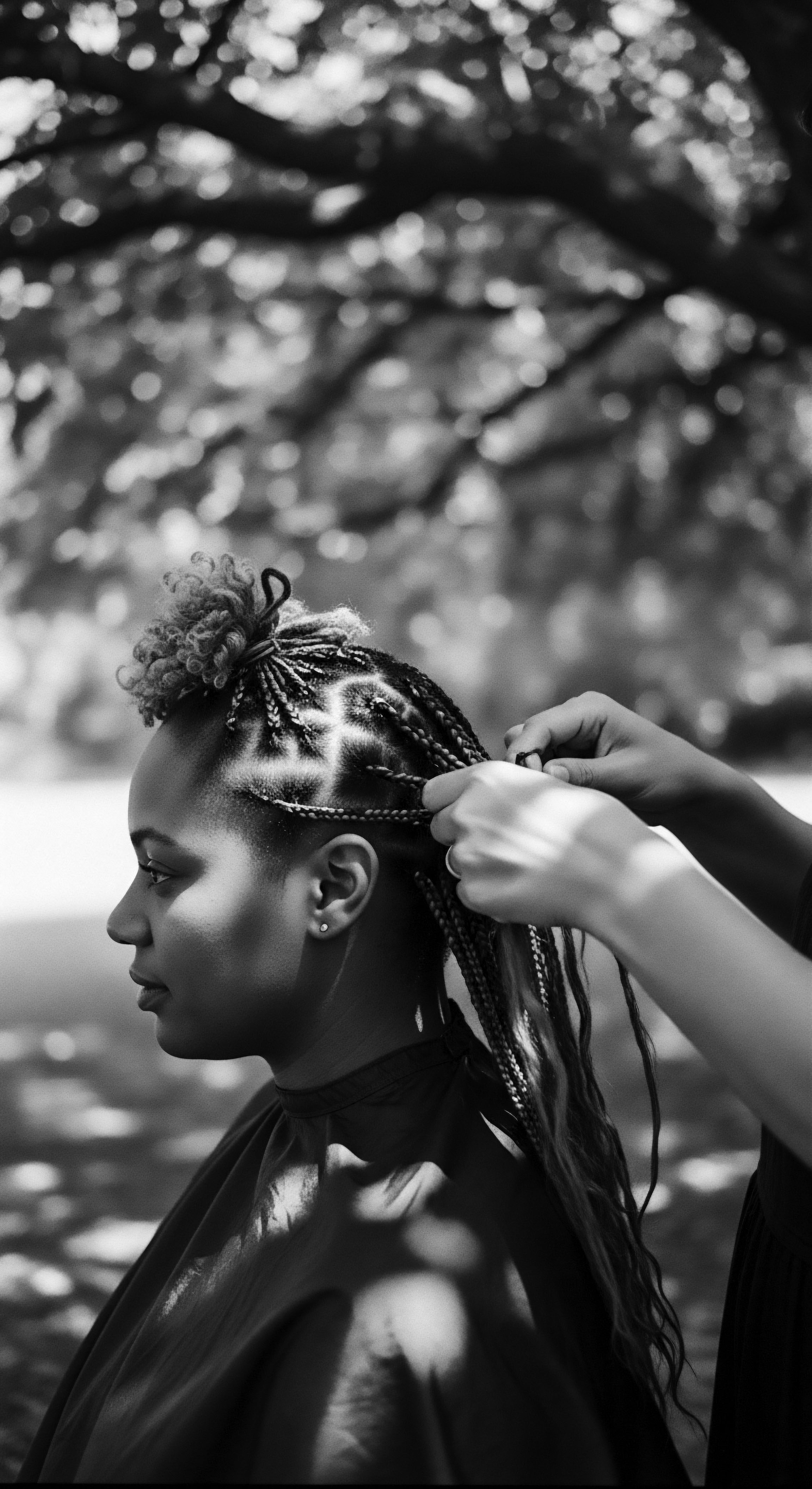
What Are the Nighttime Rituals?
The transition from daytime adornment and societal signaling to nighttime protection underscores a practical and spiritual continuum. Modern satin bonnets and silk scarves serve a similar protective purpose as their ancestral counterparts, minimizing friction against rough pillowcases that could strip hair of moisture and cause breakage. This physical protection allows natural oils to remain undisturbed, preserving moisture and extending the life of hairstyles.
Beyond the physical, the act of covering hair at night carries a spiritual weight for many, connecting them to ancestral wisdom that viewed the head as a sacred portal. In some African traditions, the hair is seen as an antenna, connecting a person to spiritual realms and the wisdom of their ancestors. The conscious act of preparing the hair for rest, often with the application of natural oils and butters, becomes a ritual of grounding, protection, and self-reverence. It is a moment of quiet ceremony, a continuation of the tradition of honoring the crown.
A traditional toolkit for hair care, both day and night, would have included a range of natural elements and handcrafted implements. These items reflect the ingenuity and resourcefulness of those who understood hair deeply:
- Natural Butters ❉ Shea butter and cocoa butter, sourced from indigenous trees, provided deep conditioning and a protective barrier against environmental stressors.
- Botanical Oils ❉ Palm oil, coconut oil, and various plant-derived extracts were used to moisturize, seal, and promote hair health.
- Herbal Rinses ❉ Infusions from specific leaves or roots cleansed the scalp and imparted beneficial properties.
- Handcrafted Combs ❉ Often carved from wood, bone, or animal horn, these tools were designed to navigate coiled textures without causing undue breakage.
The evolution of night coverings themselves, from simple cloths to more refined bonnets and wraps, reflects an ongoing adaptation while maintaining the core ancestral intention.
| Historical Period/Context Pre-Colonial African Societies |
| Covering Type & Material Various fabric wraps (cotton, hand-woven textiles) |
| Primary Heritage Purpose Physical protection from elements, spiritual reverence, social signifier, preserving elaborate styles for multiple days. |
| Historical Period/Context Slavery Era (Americas) |
| Covering Type & Material Rougher cloth, tignons, kerchiefs (often enforced) |
| Primary Heritage Purpose Resistance, identity preservation, covert communication, practical protection from labor conditions, hygiene. |
| Historical Period/Context Post-Emancipation to Mid-20th Century |
| Covering Type & Material Scarves, simple bonnets (often cotton) |
| Primary Heritage Purpose Maintaining straightened styles, protecting hair from dust/grime, extending time between salon visits. |
| Historical Period/Context Modern Natural Hair Movement |
| Covering Type & Material Satin/silk bonnets, scarves, pillowcases |
| Primary Heritage Purpose Moisture retention, frizz prevention, preserving natural coil patterns, honoring ancestral practices, self-care ritual. |
| Historical Period/Context The enduring practice of covering hair at night, though its materials changed, consistently rooted in a legacy of hair care and identity preservation. |

Relay
The ancestral understanding of covering textured hair at night represents a profound intersection of biology, cultural wisdom, and spiritual conviction. This practice, far from being a mere footnote in hair care, is a powerful historical marker, a testament to the ingenuity and resilience of communities who understood their hair as an extension of their very being. The insights gleaned from ancient practices find remarkable congruence with contemporary scientific understanding, cementing the heritage perspective as a deeply authoritative source of knowledge.

How Does Covering Hair Protect Hair Health?
From a scientific perspective, the act of covering hair at night, particularly with smooth fabrics like silk or satin, directly addresses the unique structural properties of coiled hair. Textured hair, by its very nature, possesses an external cuticle layer that is more exposed and prone to lifting compared to straighter hair types. This structural characteristic makes it more susceptible to moisture loss and physical abrasion. When textured hair rubs against rough surfaces, such as cotton pillowcases, the friction can cause the cuticle scales to lift, leading to:
- Moisture Depletion ❉ The lifted cuticle allows precious hydration to escape, leaving strands dry and brittle.
- Friction Damage ❉ Constant rubbing results in breakage, split ends, and tangling, compromising the hair’s length and overall health.
- Loss of Style Definition ❉ The mechanical disruption from friction can undo carefully styled patterns, causing frizz and loss of coil integrity.
The ancestral choice of softer materials, even in their earliest forms, or the practice of carefully wrapping hair, served as an intuitive solution to these biophysical challenges. Modern materials like silk and satin minimize this friction, allowing the cuticle to remain smooth and sealed. This creates a microenvironment that preserves the hair’s natural moisture, reducing breakage and maintaining style definition. This empirical knowledge, accumulated over generations, predates microscopic imaging and advanced material science, yet aligns perfectly with their findings.

What Are the Cultural Echoes in Modern Practices?
The contemporary practice of wearing bonnets or wraps to bed for textured hair is a direct continuation of ancestral traditions, reflecting a deep cultural memory. While the specific context has changed from safeguarding ceremonial styles or resisting colonial mandates, the underlying principles of protection, preservation, and reverence persist. This continuity speaks to the enduring value placed upon hair within Black and mixed-race communities.
The significance of hair in African cultures goes back thousands of years. Hair served as a canvas for communicating identity, social role, and personal beliefs. Hair care routines, often involving natural ingredients, were passed down across generations.
The act of covering hair, whether for day or night, became a silent yet potent expression of identity, particularly for enslaved individuals who were systematically dispossessed of their cultural markers. This historical backdrop means that a bonnet today is not merely a hair accessory; it is a symbol imbued with centuries of heritage.
The nightly ritual of hair covering, steeped in heritage, transcends simple care, embodying generations of protective knowledge and identity affirmation.
Consider the spiritual dimensions, too. In some Indigenous cultures, including various Native American tribes, hair is a direct extension of the spirit, a sacred repository of memories, strength, and ancestral connection. For the Lakota, for example, hair is referred to as “pehin,” holding power, healing, and spiritual guidance.
The practice of tending to hair, including its protection, becomes an act of respecting this sacred connection. While the specific practices may differ across African and Indigenous diasporas, a shared thread of reverence for hair’s spiritual essence is clear.
The societal implications of hair, particularly textured hair, have also influenced these protective customs. Historically, and even in some contemporary spaces, textured hair has faced discrimination and negative perceptions, sometimes labeled as “unprofessional” or “unmanageable.” This societal pressure, a remnant of colonial attitudes and Eurocentric beauty standards, further reinforced the need for protective styling and nightly covering to preserve hair’s health and appearance, allowing individuals to maintain their desired look against external scrutiny.
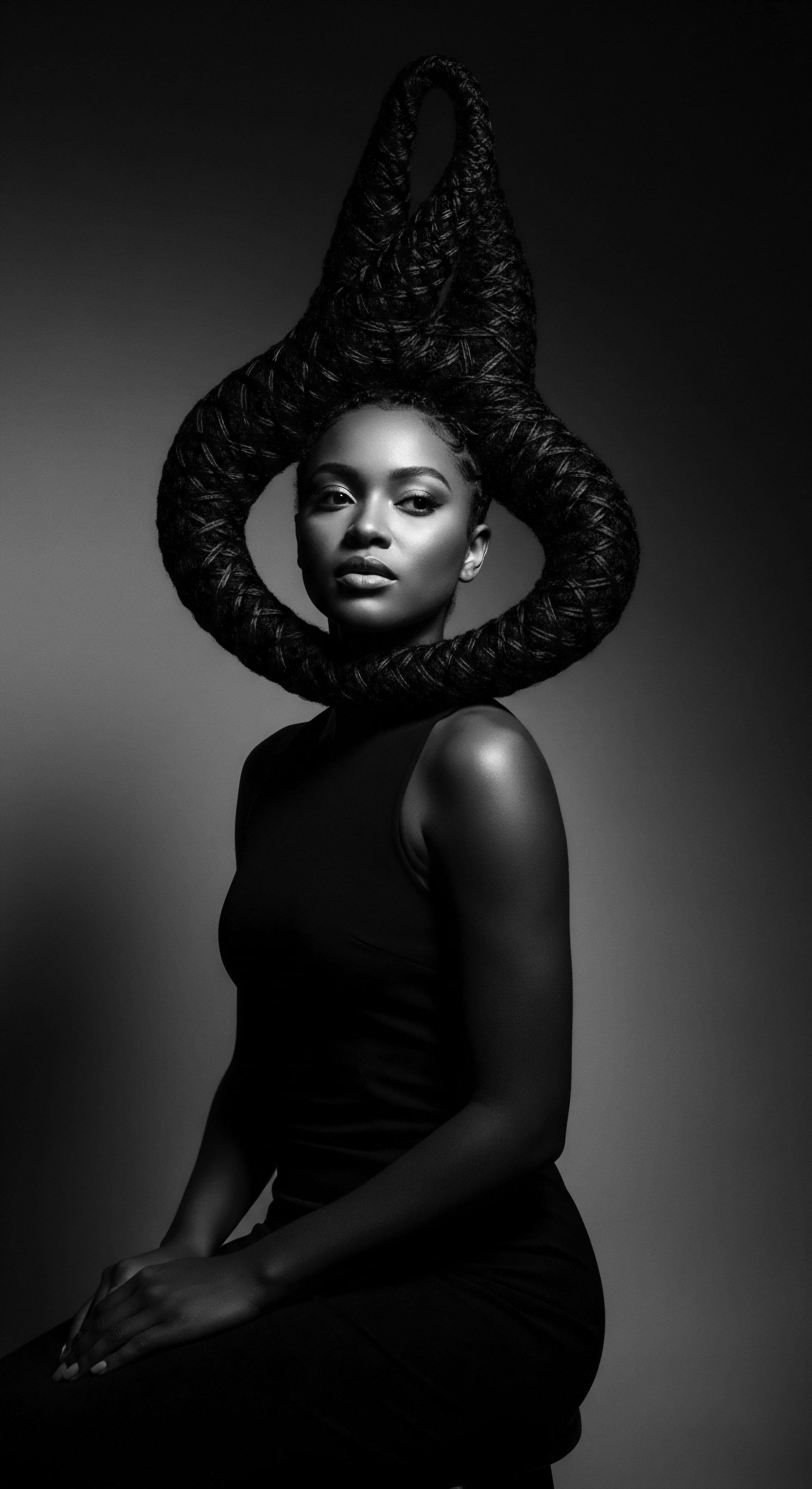
What Is the Holistic Link to Well-Being?
The ancestral meaning behind covering textured hair at night is also deeply linked to a holistic view of well-being. This perspective regards hair care as integrated with physical comfort, mental peace, and spiritual alignment. A well-protected head of hair at night contributes to a more restful sleep, free from the physical irritation of tangled strands or the emotional burden of damaged hair. This gentle care becomes a part of a larger self-care regimen.
The practice offers a profound sense of self-care and continuity with one’s lineage. As Williams (2021) writes, for many Black women, a hair wrap also honors childhood traditions, affirms their need for self-care, and improves their sleep. This highlights the intergenerational transfer of practical wisdom and cultural identity through shared rituals. The quiet moments spent preparing hair for sleep, perhaps applying traditional oils like shea butter or coconut oil, become a meditative experience, a way to connect with the self and with those who came before.
This is where the scientist and the wellness advocate converge ❉ understanding the biomechanical benefits of silk against a kinky coil, while simultaneously acknowledging the profound peace found in performing a ritual passed down through matrilineal lines. The physical preservation of hair, therefore, extends to the preservation of cultural memory, a vital link in the chain of heritage.
The ongoing popularity of night coverings is also driven by practical modern considerations that resonate with historical needs.
- Style Longevity ❉ Covering hair extends the life of various styles, from intricate braids to twist-outs, reducing the need for frequent manipulation. This practice aligns with the ancestral desire to preserve elaborate styles that might have taken considerable time to craft.
- Reduced Manipulation ❉ Less daily restyling means less stress on the hair strands, leading to reduced breakage and healthier lengths over time.
- Moisture Retention ❉ The smooth surface of a satin or silk bonnet creates a barrier against moisture evaporation, helping hair retain its natural oils and applied products. This is critical for textured hair, which tends to be naturally drier.
- Cleanliness and Hygiene ❉ Covering hair prevents it from gathering lint, dust, or oils from bedding, contributing to overall hair and scalp cleanliness.
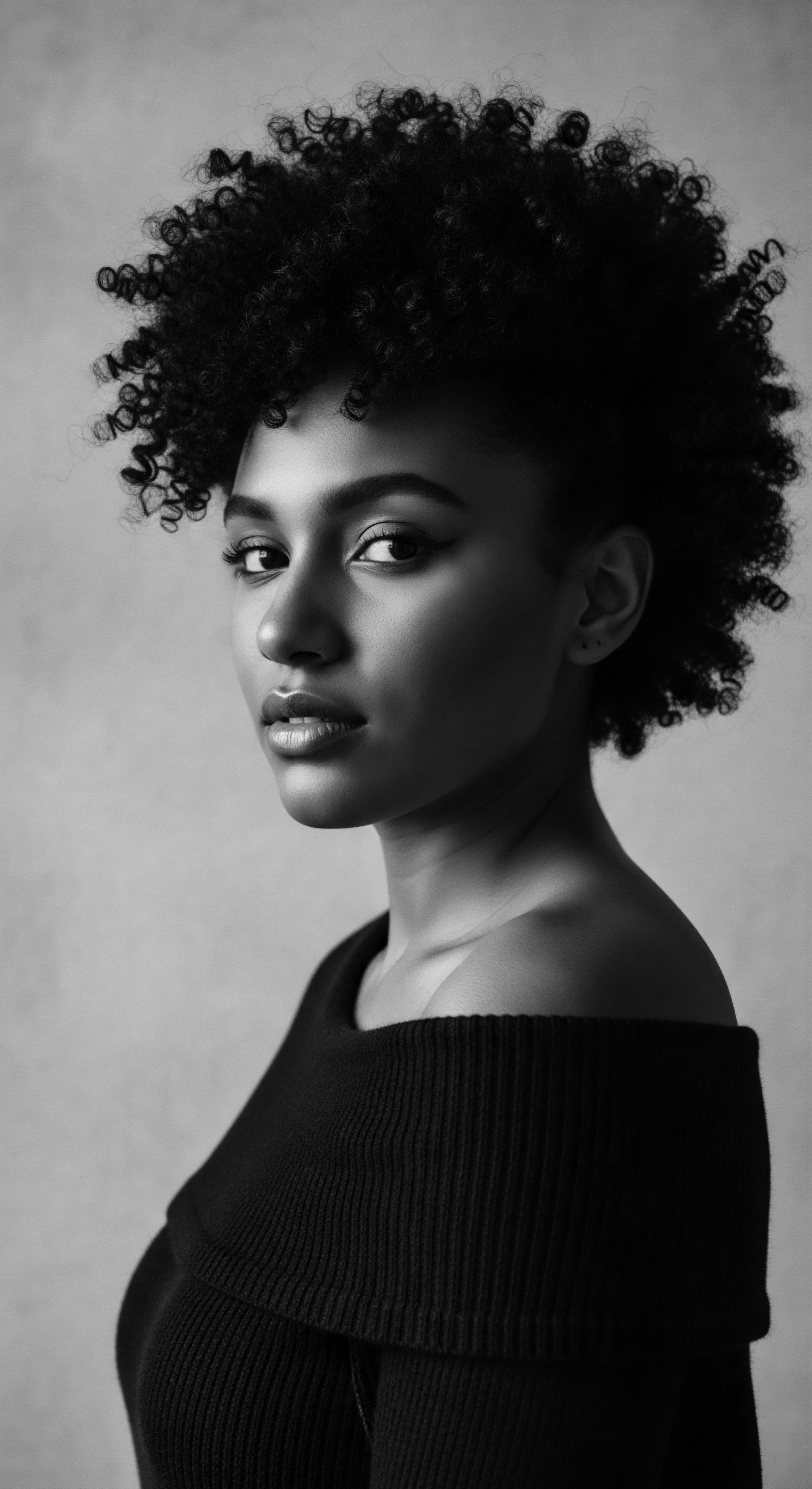
Reflection
The ancestral meaning behind covering textured hair at night transcends simple preservation. It stands as a living testament to generations of collective wisdom, a profound dialogue between the past and the present. Each wrapped coil, each protected strand, carries the whispers of ancestors who understood hair not only as a biological component but as a revered extension of self, identity, and spirit. This practice, often seen as a commonplace element of modern hair care, is a powerful legacy, a silent chronicle of survival, resistance, and the continuous celebration of Black and mixed-race heritage.
It is a ritual that speaks of more than just a smooth curl or a hydrated scalp. It speaks of dignity maintained in the face of dehumanization, of cultural memory nurtured through generations, and of an innate understanding of the delicate balance between physical well-being and spiritual connection. The very fibers of textured hair, with their unique structure, served as a canvas upon which ancestral wisdom was etched, guiding methods of care that were both practical and deeply symbolic.
As we don our bonnets or tie our scarves each evening, we participate in a timeless act, a thread in the Soul of a Strand that reaches back through millennia. We honor the ingenuity of those who, lacking modern science, observed and deduced the best ways to shield their crowns. We salute the resilience of those who, even under oppressive conditions, clung to their hair as a last vestige of self and culture. And we affirm our own place within this continuous, vibrant story of textured hair—a story of beauty, strength, and an unbreakable link to our ancestral roots.
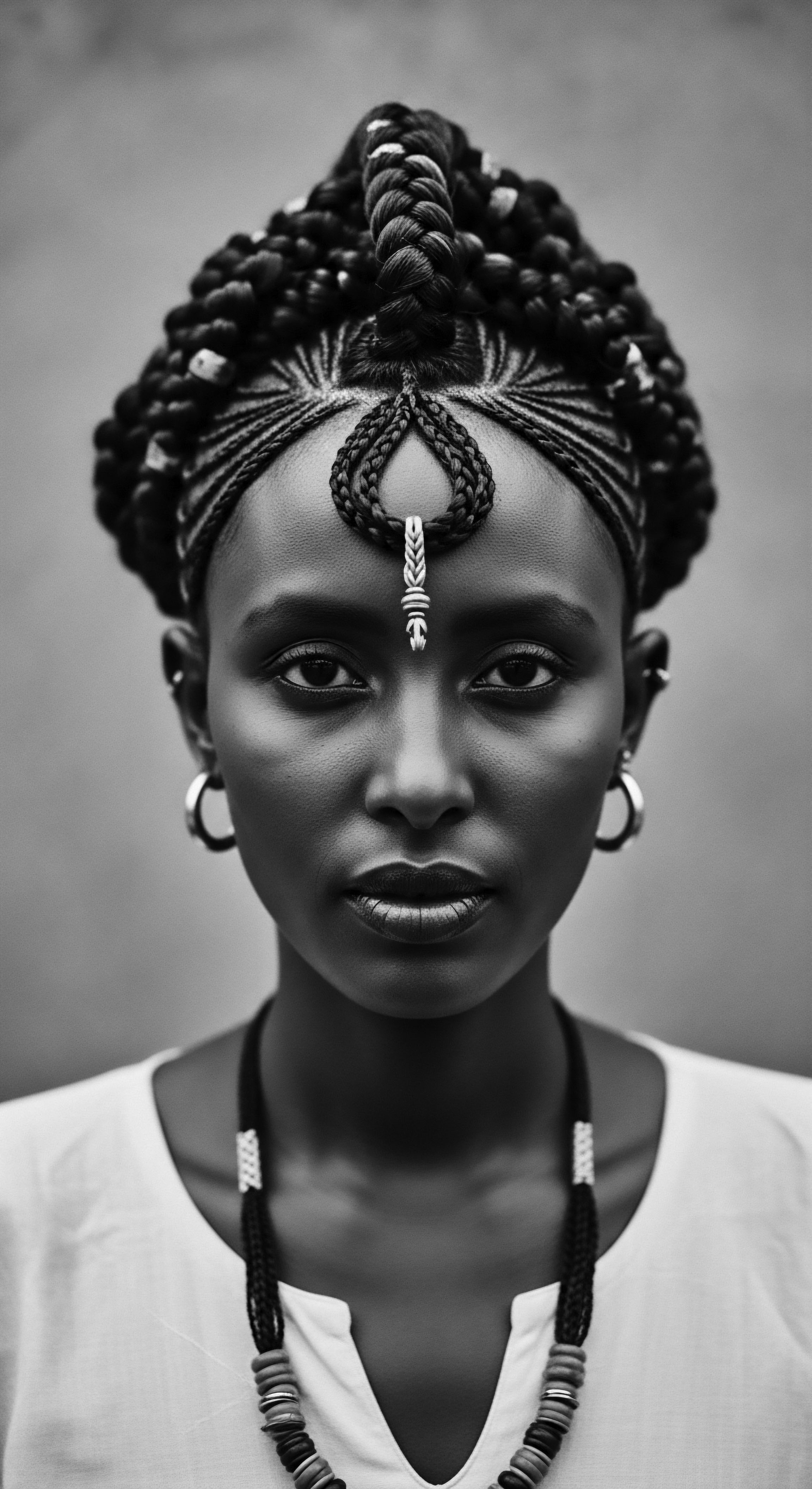
References
- Omotos, Adetutu. (2018). “Dreaded” African Hair. Journal of Pan African Studies .
- Gordon, Mark. (2018). The Dreaded Colonial Legacy ❉ African Hairstyles. Cited in Omotos (2018).
- Moutoussamy-Ashe, Jeanne. (1981). Daufuskie Island ❉ A Photographic Essay. Smithsonian National Museum of African American History and Culture.
- Byrd, Ayana, & Tharps, Lori L. (2014). Hair Story ❉ Untangling the Roots of Black Hair in America. St. Martin’s Griffin.
- Hooks, bell. (1992). Black Looks ❉ Race and Representation. South End Press.
- Tharps, Lori L. (2002). Hair Story ❉ Untangling the Roots of Black Hair in America. St. Martin’s Press.
- Akbar, Na’im. (1996). Light from Ancient Africa. Mind Productions & Associates.
- Williams, Mariette. (2021). How a Hair Wrap Routine Protects More Than Just My Hair. Sleep.com.
- Janis, Keith. (2023). Why Lakota and Other Native Americans Consider Hair Sacred. Native News Online.
- Aghajanian, Liana. (2022). A Beautiful Record of How Modern Headwraps. The Wrap Life.
- Porter, Horace. (1999). Jazz ❉ A New American Art. University of California Press.
